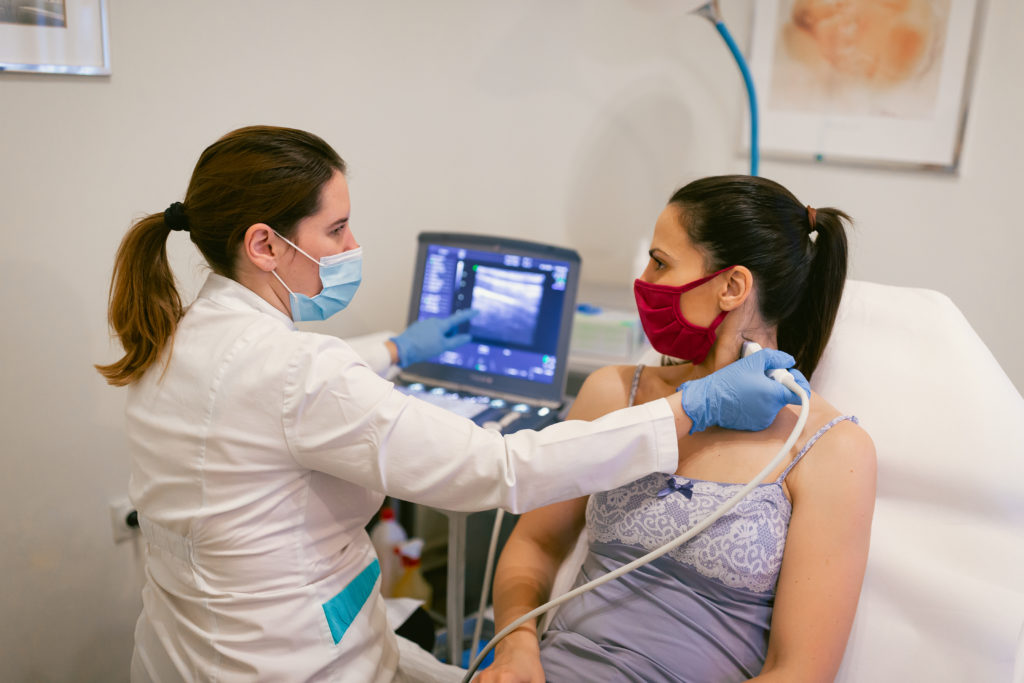What Every 50+ Year Old Man Should Know to Stay Healthy (or Stay Alive?)
Young men and their cars… Most men will never miss routine maintenance – not an oil change, tire rotation, and other routine or non-routine maintenance. Fast forward to the golden age of the vehicle…the car still gets babied. Passing 75,000 miles and the check-ups get more and more frequent.
Same holds true for our bodies. You might skip the early years’ routine checkups, but what about when we hit 50+ years? Things are not the same. There are multiple problems that can strike after 50. Here’s where the chronic conditions start cropping up and here’s what to do about them.
High Blood Pressure
Perhaps the most common condition healthcare providers see among patients in their 50s is high blood pressure, which is a major risk factor for heart disease and stroke. One reason high blood pressure is so prevalent in this age group is that the vascular system changes as we age. Men don’t notice this, but arteries start to stiffen and become less elastic and the pressure inside builds. Then there’s that little bit of extra weight and the stress that often accompany middle age, which contributes to the creeping numbers.
The good news is that high blood pressure is manageable with medication and lifestyle modifications. The Illinois Department of Public Health states that one in three US adults has high blood pressure, but because there are no symptoms nearly one-third of these people don’t even know they have it. In fact, most men have it for years without even knowing it.
What are the symptoms of high blood pressure? That’s the bad news…there are usually none. The only way to monitor your blood pressure is by getting it checked more regularly. If you don’t have a blood pressure cuff at home (cost about $30), you can check it yourself at a pharmacy and health fairs. According to Harvard Medical School men over 50 should have normal pressure of 120/80 or below and this should be checked a minimum of once a year. If it is elevated, more often if you are at increased risk for heart disease and stroke (such as from smoking or diabetes).
High Cholesterol
Another contributor to heart disease is high cholesterol, which can build up on the inside of the blood vessels over time and form “plaque” that slows or blocks blood flow. This plaque can also break loose and cause a blood clot or even a heart attack or stroke. Just like high blood pressure, your risk of developing high cholesterol increases with age. It also comes with no symptoms or warning signs, which is why it’s important to see a primary care physician regularly and have them conduct routine blood tests. Diet and exercise can help lower cholesterol as can medication. Harvard Medical School suggests getting your cholesterol checked every five years once you hit age 50. If you have risk factors for heart disease, discuss with your doctor whether you should be tested more frequently.
Diabetes
While you’re getting your blood checked for cholesterol your healthcare provider may also screen you for diabetes, another common condition that creeps in our 50s and can wreak havoc on our health. According to the Illinois Department of Public Health diabetes can increase our risk for blindness, kidney failure, heart disease, sexual dysfunction, nervous system damage, and amputation of a limb. Nearly one-third of those with diabetes don’t even know they have it. It’s more common among African Americans, Latinos, Native Americans, Asian Americans, and Pacific Islanders.
According to the Department of Health, most adults get pre-diabetes before they get diabetes. The good news is that the recently completed Diabetes Prevention Program Study conclusively showed that people with pre-diabetes can prevent the development of adult diabetes by making change in their diet and increasing their level of physical activity. Again, the warning signs of diabetes are often silent, which is why it’s important to get screened.
Heart Disease
According to the most recent article on the subject in AARP magazine, there are warning signs of heart disease: high blood pressure, high cholesterol and diabetes are the three leading risk factors of heart disease which is the number one cause of death in the United States. Pain in the chest is an indication that something could be wrong, but there are other symptoms too, including:
- Unexplained back pain that happens when you exercise
- Pain in the neck, jaw, or throat
- Pain in the upper abdomen
- Shortness of breath
- Nausea, vomiting or fatigue
- Dizziness
- Heart palpitations
If you experience these symptoms, call 911 immediately.
Arthritis
Another condition that pops up on our 50s is regularly overlooked or dismissed and that is arthritis, especially osteoarthritis, which is the wear and tear type of arthritis that occurs when the joint cartilage between bones is damaged or breaks down. It can be very aggravating for even younger men, but especially over the age of 50 we see pain associated with that more and more.
Treatment for osteoarthritis runs the gamut. Increasing physical activity can help prevent further pain or disability. Your healthcare provider can also recommend over the counter or prescription pain relievers to alleviate discomfort.
Osteoporosis
When we think of osteoporosis we usually think that it affects only women as they hit 50. Osteoporosis or the weakening of the bones becomes most common according to the CDC and that’s because one of the risk factors of osteoporosis is being post-menopausal. However, it creeps up on men over 50. One symptom of this is increased calcium in the blood, which means that your primary care physician, if you see him or her regularly, will order a blood test to determine your calcium level.
Weight-bearing exercises, walking and upper body strength training for example can help reduce your risk of developing osteoporosis. So can paying attention to your calcium intake and vitamin D levels, both of which are important to bone health.
Bone density exams can determine levels of osteoporosis or osteopenia.
Cancer
Because advancing age is the biggest risk factor of cancer, keeping up with routine screenings becomes important in our 50s. While women should get a mammogram at least every two years, men should talk to their healthcare providers about prostate cancer screenings. Colon cancer screenings also become more regular for both men and women. According to the Illinois Department of Health prostate cancer screening is important.
You should discuss with your doctor getting a prostate specific antigen (PSA) blood test and digital rectal exam (DRE) yearly, beginning at age 50. According to the Department of Health men at high risk such as African Americans and men who have a first degree relative (father, brother, or son) diagnosed with prostate cancer at an early age (younger than age 65) should begin testing at age 45. Men at even higher risk – those with several first-degree relatives who had prostate cancer at an early age – could begin testing at age 40 depending on the results of their initial test further testing may not be needed until 45.
Harvard Medical School recommends that men ages 50 to 75 should be tested for colorectal cancer by one of these three methods:
- Fecal accult blood test annually
- Flexible sigmoidoscopy every five years
- Colonoscopy every 10 years. After age 75 discuss the need for continued screening with your doctor.
Lung Cancer
According to Harvard Medical School annual screening for lung cancer with a low dose CT scan in adults 50 to 80 years who have a 30 pack a year smoking history (smoke one pack a day for 30 years, two packs a day for 15 years, etc.) and who currently smoke or have quit within the past 15 years.
Obesity
This creeps us on all of us. Being overweight or obese can damage our health. It increases our chances of developing diabetes, cardiovascular disease, high blood pressure, and many cancers that lead to many other health problems.
The Illinois Department of Health recommends that we have our body mass index (BMI) calculated to screen for obesity. BMI is a measure of body fat based on height and weight. You can also find BMI with a BMI calculator from the National Heart, Lung & Blood Institute. If you are found to be overweight or obese, discuss with your doctor what you can do to reduce your weight.
Here’s another tip – do not assume that your height remains the same. Measure weight annually but measure your height once every 10 years past the age of 50, according to Harvard Medical School.
One Big Warning
Mind your immune system. It is important to bring up immunizations with your physician at the age of 50. Vaccines become much more important because during this time immune systems start to wane a little bit and you’re more at risk for infection. Vaccines that should be discussed with your physician include the COVID vaccine, the flu shot, pneumonia and shingles.
To find a doctor or schedule an appointment, visit Steward DoctorFinder™.




